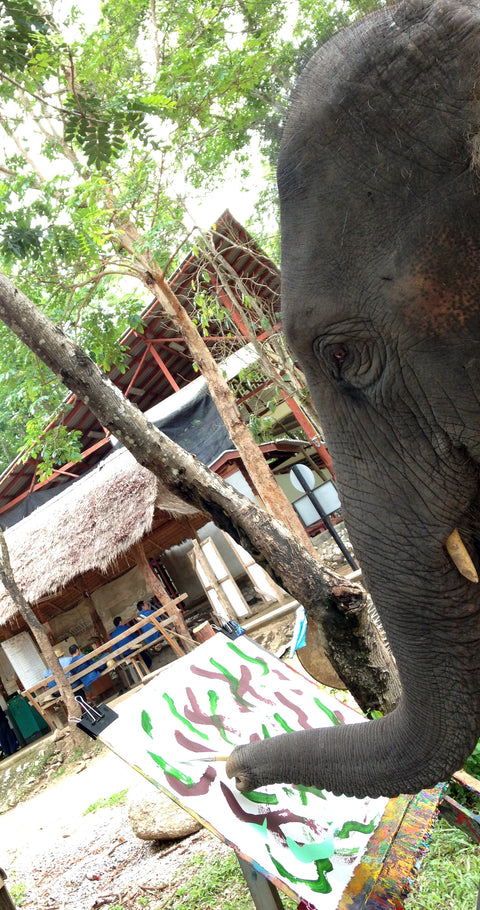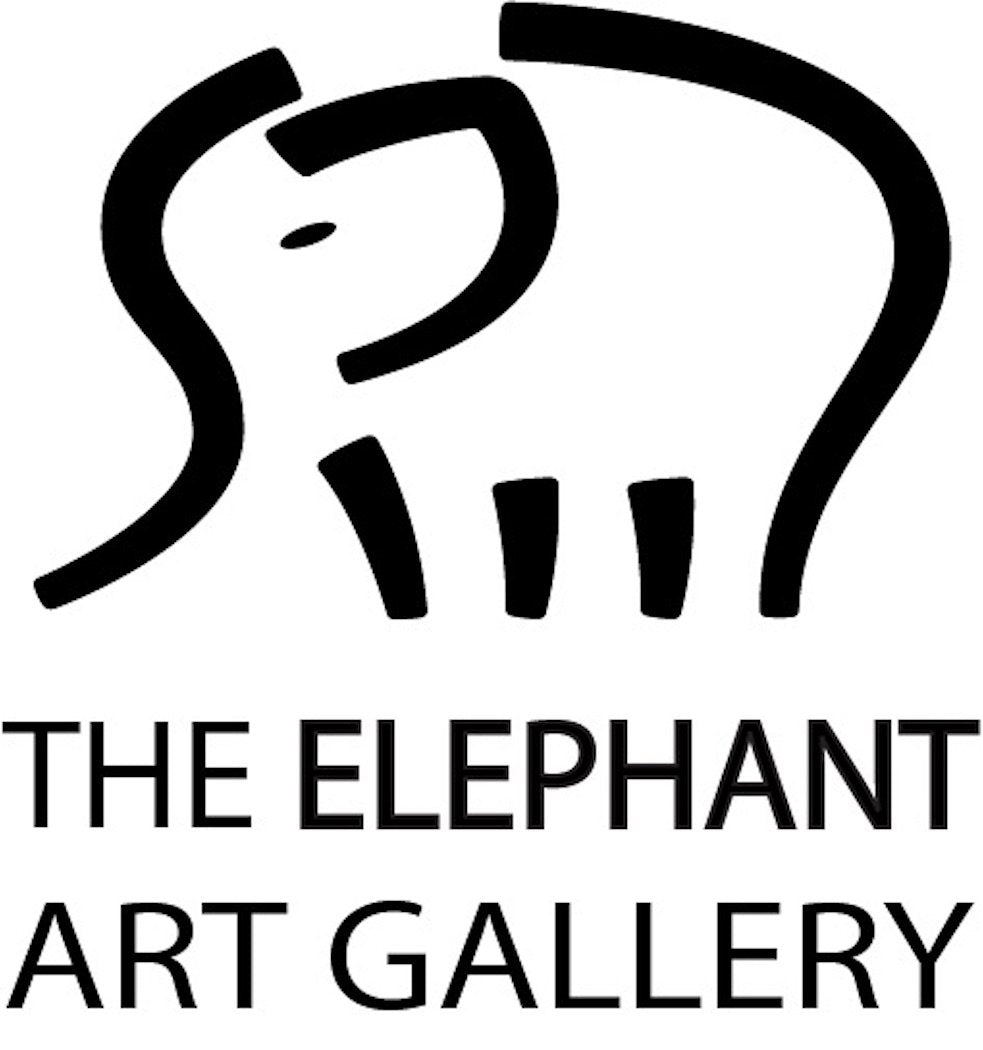
How Can I Spot a Fake Elephant Painting?

Faked elephant painting could take two forms: art that is actually painted by a human, or art that is painted by an elephant that has been physically aided by a human.
Art that is painted by a human to represent art by an elephant would be very difficult to distinguish, but I believe that it is very rare to find any. To avoid it I recommend buying only from established, reputable outlets and websites that have a track record and a reputation to uphold.
Elephant art that has been painted with the physical help of a human is quite prevalent, however, but thankfully it is also relatively simple to spot. You will find some websites selling almost perfect renditions of well-known objects (a vase of flowers for example) or abstract art that has perfect geometry like triangles, squares or circles all apparently made unaided by an elephant. These paintings may look nice and they probably had elephant involvement, but they were manipulated or use trained repetitive strokes and are not the ‘real thing’ as we define it. I am a purist and so you can be sure that all the paintings offered for sale on this website are created by elephant artists unaided by human hand and not following any trained brushstrokes. Therefore they are all abstract in form.
“Sadly faked elephant art does exist. To avoid it I recommend buying only from established, reputable outlets and websites that have a track record and a reputation to uphold.”
Bear in mind that every painting elephant has his/her own distinctive style of painting and with a little study you will learn to recognize this for yourself. For example, I can tell you immediately on seeing a painting that: “Ah yes, that’s definitely a painting by Aet in his early creative loop period”, just as I might recognize a Picasso during his ‘Blue’ period. It really is a wonder to watch as they create each work in their own way unaided. They have off days just like human artists and on these occasions, their work gets a bit sloppy. But they never have really great days when, without manipulation, they suddenly create a masterpiece self-portrait or something that is easily recognizable to you and me!
So what about elephant self-portraits? Are they real of fake?
At the end of March 2008, a video on YouTube about an elephant painting a ‘self-portrait’ caught the attention of the world. A raging debate spread like wildfire from the YouTube forums to numerous blog sites. ‘Is this for real?’ was the most hotly debated question. Following the release of the video, we were bombarded with queries – around 8,000 visitors a day who came to our website at that time seeking answers.
Well, the answer to that question is not a straightforward yes or no and today people are still asking us. As the debate is also central to what we believe in here at The Elephant Art Gallery, we’d like to give our take on the subject. Simply put: “Yes” the act of painting was performed by an elephant at a camp here in Chiang Mai. “No” the painting is not real art as we define it.
What you saw on that video is being repeated over and over again at some camps in Thailand for the benefit of tourists every day. By now the number of identical ‘self-portraits’ that have been made probably number in the thousands – as do identical ‘vases of flowers’ and ‘landscapes’ and other readily identifiable (to humans anyway) scenes that have also proved to be popular. So popular in fact that they are being offered at over $800 by one re-seller website, typically at around $500 by others and even prints (yes, copies) are selling for $300 each!
I can tell you categorically that the elephants that paint these types of pictures do not have the faintest idea what they are painting”
Firstly there’s the question of understanding. Elephants do not paint renditions of themselves or what they see around them, at least not in any recognizable form. I can tell you categorically that the elephants that paint these types of pictures do not have the faintest idea what they are painting.
Secondly, there’s the notion of volition. Elephants have been known to pick up a stick and doodle in the dust of their own accord – which is a natural gift and sign of intelligence – and the training required to take them from that to painting abstracts on a canvas with a paintbrush is minimal. Furthermore, each quickly develops its own unique style. Elephants are not naturally disposed to paint perfect lines and dots in the same place and as any mahout will tell you, it can take up to a year to teach them to do so. Which technique do you think the elephants enjoy doing most?
So what the world saw in that video was real, but to our mind it was only one step away from putting an arm down a rubber trunk and faking it. ”
So what the world saw in that video was real, but to our mind, it was only one step away from putting an arm down a rubber trunk and faking it – as some people actually thought. While the abstract variety of elephant art can be called art in the true sense, the rendition of images is artificial and arguably, a travesty of art.
Our comments are not meant as a rebuke of the elephant camps that are doing this – the fact is that in some cases selling these paintings raises money for the elephants under their care, which is great. And our comments are certainly not meant as a criticism of anyone who has bought elephant self-portraits and other images, because those people liked what they saw, bought it for their own reasons and no doubt enjoy owning it. Our views at The Elephant Art Gallery are our own. We’d just like our readers to understand the difference between art that is unique and that which is not, and art which is performed naturally and that which is manipulated. Knowing that you can make a more informed choice.
